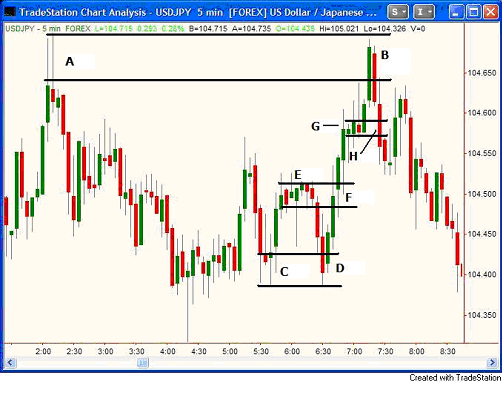Trading Stocks Education Pivot Support and Resistance
Post on: 17 Июнь, 2015 No Comment

To get a feel for where the most important daily support and resistance levels are located it would be ideal to incorporate the volume behind every trade into a set of equations to calculate the daily volume-weighted average price and standard deviation levels. But because it can be difficult to obtain reliable volume data for real-time, we might be better off concentrating solely on price action.
For years floor traders and market makers have done this by computing a set of pivot point support and resistance levels between which price can be expected to fluctuate. In a way, it is not so important that you know where these support and resistance levels are, but rather, that you know the floor traders or market makers know where they are.
For example, if the floor traders are gunning for money-management stops, guess what price levels they will test? Clearly, the pivot point support and resistance levels are the prices at which many stops are placed because everyone knows where these expected trading limits are.
The central pivot point (CPP) is the equilibrium point around which trading is expected to occur. The calculation for tomorrow’s CPP is simply the average of today’s high, low and close. When prices move away from the CPP there are zones of support and resistance that define the expected value area of the market. Because these zones are known, penetration and market moves beyond these support and resistance levels bring new players into the market who give further momentum to the buying or selling pressure.
Where C[1] is yesterday’s closing price, H[1] is yesterday’s high and L[1] is yesterday’s low, the central pivot point for today and its support and resistance levels are defined as:
Central pivot point P = (H[1] + L[1] + C[1]) / 3
First resistance R1 = (2*P) — L[1]
First support S1 = (2*P) — H[1]
Second resistance R2 = P + (R1 — S1)
Second support S2 = P — (R1 — S1)
There are variants that calculate the pivot point a little differently. One method substitutes the yesterday’s close with today’s open, and another variation averages both yesterdays close and today’s open with yesterday’s open & close. I have done some rough comparisons with intra-day data, and (at least currently) the original method seems to be more accurate.

Trading for today will usually remain between the first support and resistance levels as the floor traders and market makers make their markets. The second resistance or support levels come into play only upon failure of the first resistance or support levels to contain price.
If either of the first levels is penetrated, off-floor traders are attracted to the market. In this event, the breakout levels reverse their functions and serve as test points for continued trading. In a bullish breakout, the first resistance level now becomes a support level and the second resistance level becomes a new resistance level. In a bearish breakout, the first support level now becomes the resistance level and the second support level is now the new support level.
Super Divergence Blueprint — Learn how to discover ‘hidden’ market moves. There are points in any market (stocks, forex, futures) where a divergence pattern occurs that could trigger a potentially huge market move that most trend-following methods would otherwise miss? Super Divergence Blueprint by ProfitsRun reveals how you can discover Hidden Trades with astonishing simplicity. Click To Get More Info!
It is clear that money-management stops placed within the range between the first support and resistance levels have a high probability of being hit. This is most likely the reason why almost all off-the-floor traders believe with absolute certainty that floor traders are gunning for their stops. To come to grips with this, some traders have used the four-tick rule by which a money-management stop is placed four ticks below the first support line or four ticks above the first resistance line.
However, in the cat-and-mouse game of trading, if the floor traders know where everyone calculates support and resistance it doesn’t take a giant mental leap to figure out they can pick off all the stops snuggled just outside these ranges as well.
The primary value of these support and resistance levels is that they enable you to know what the floor traders and market makers know. As technical trading tools, they should only be used in conjunction with other technical indicators to improve their efficiency.
In general, evaluate stocks before the open to determine the recent momentum for the stock. Consider a trade in that stock if the recent momentum of the stock, the current market momentum are going the same way. Try to catch the stock just after it moves through the pivot point. In addition to determining where to place stops, you can use the pivot / support / resistance to minimize getting into momentum trades at false tops & bottoms. You can also use the support resistance levels to estimate what the potential profit will be, to possibly keep out of trades with low potential.














